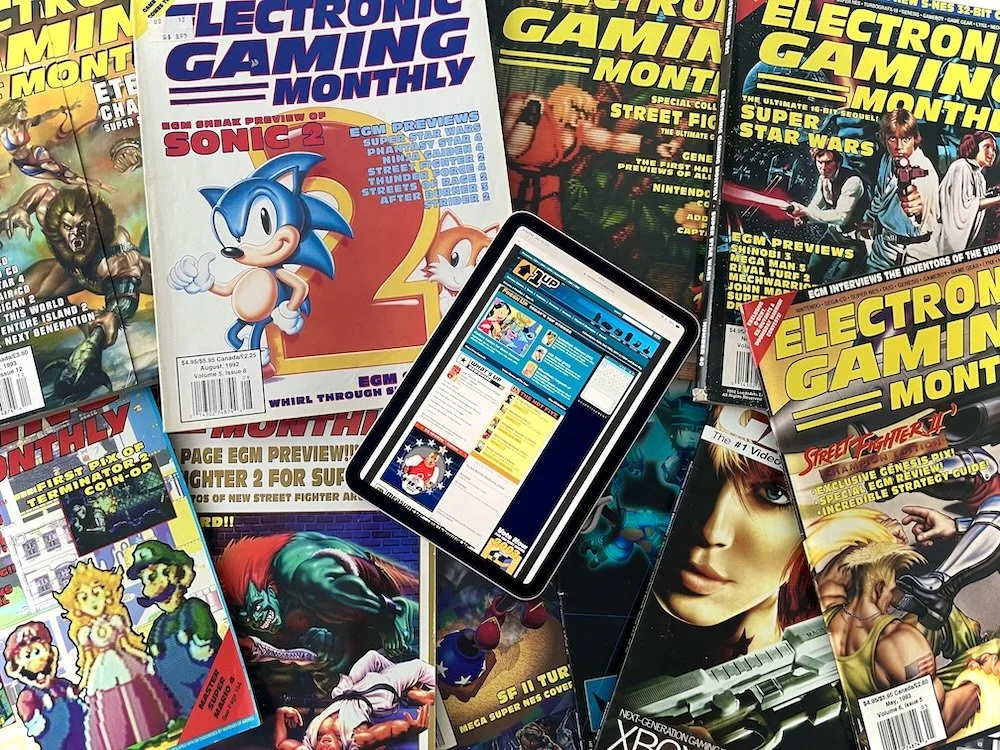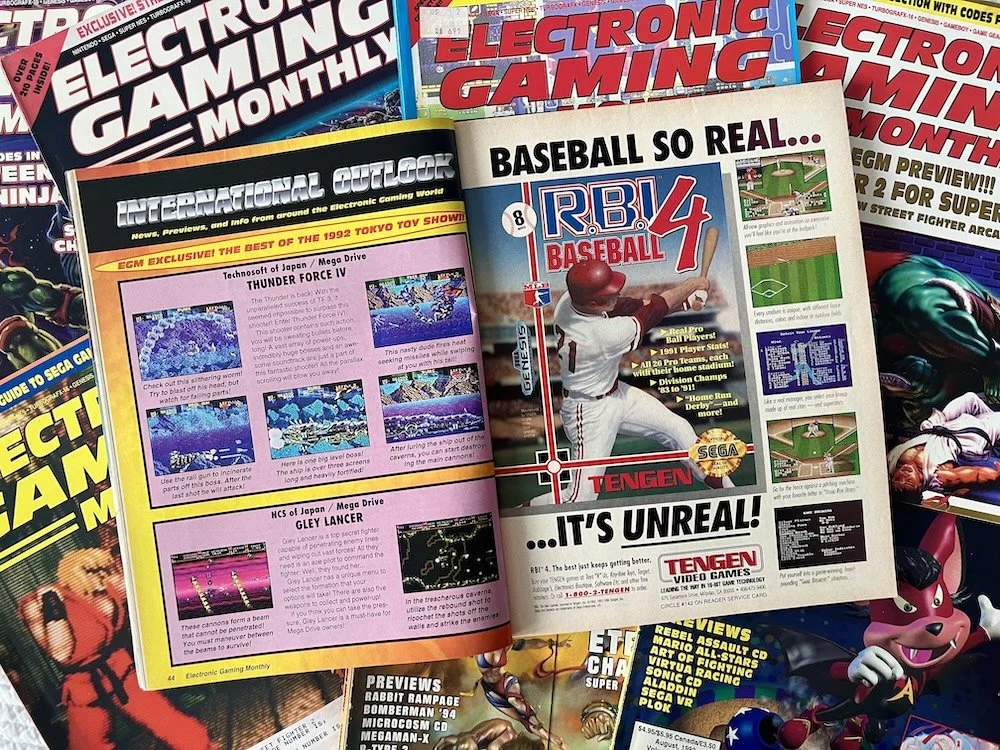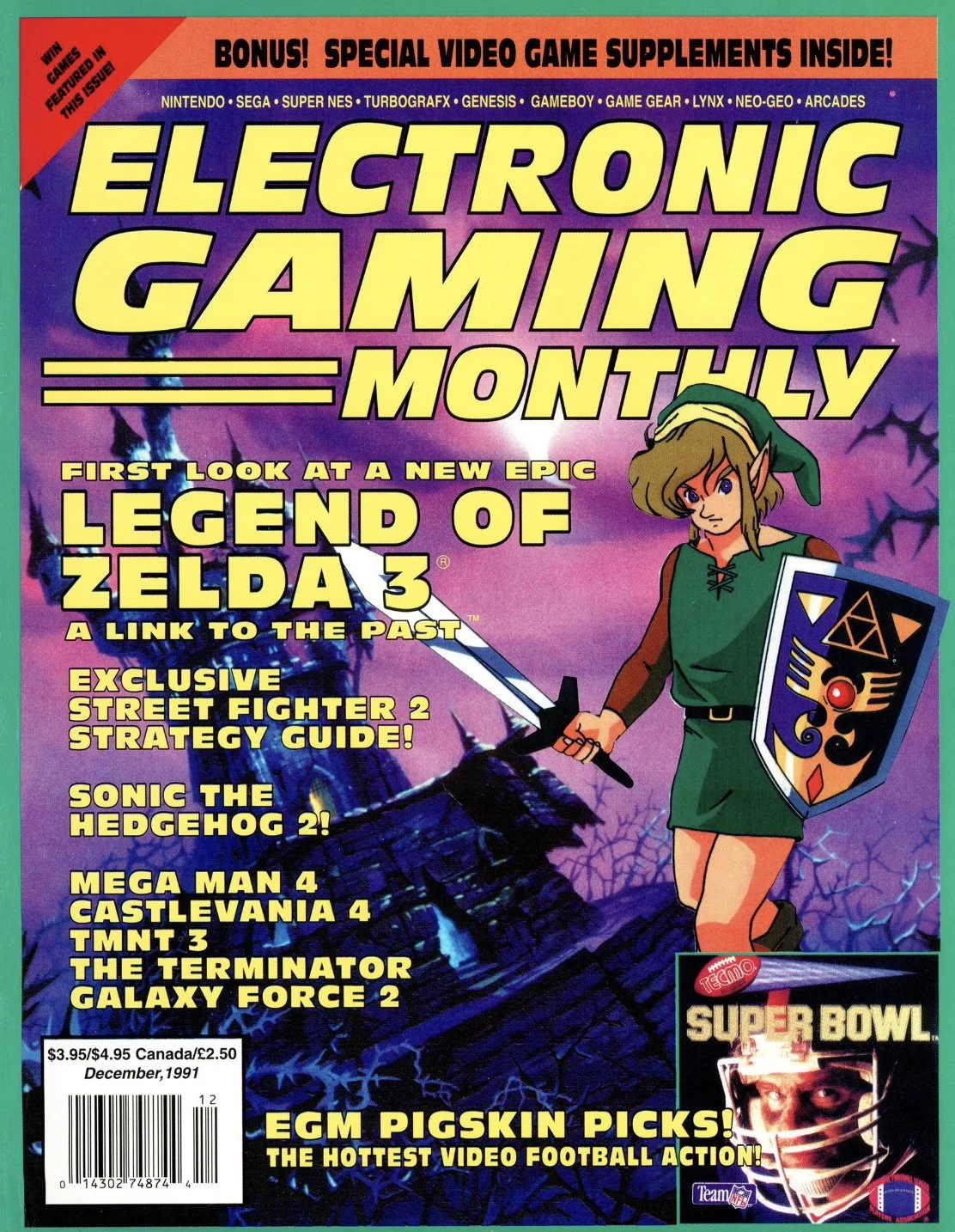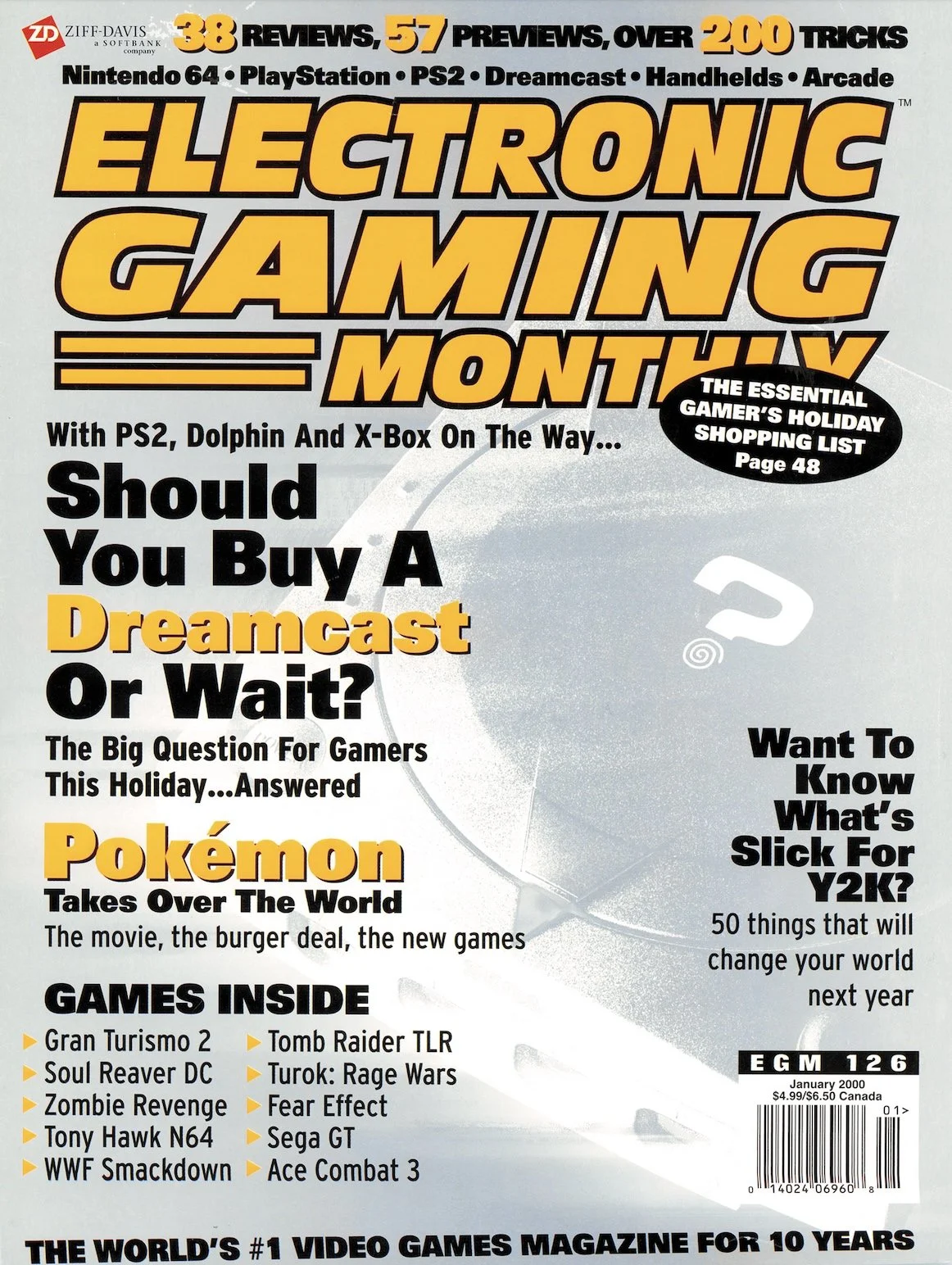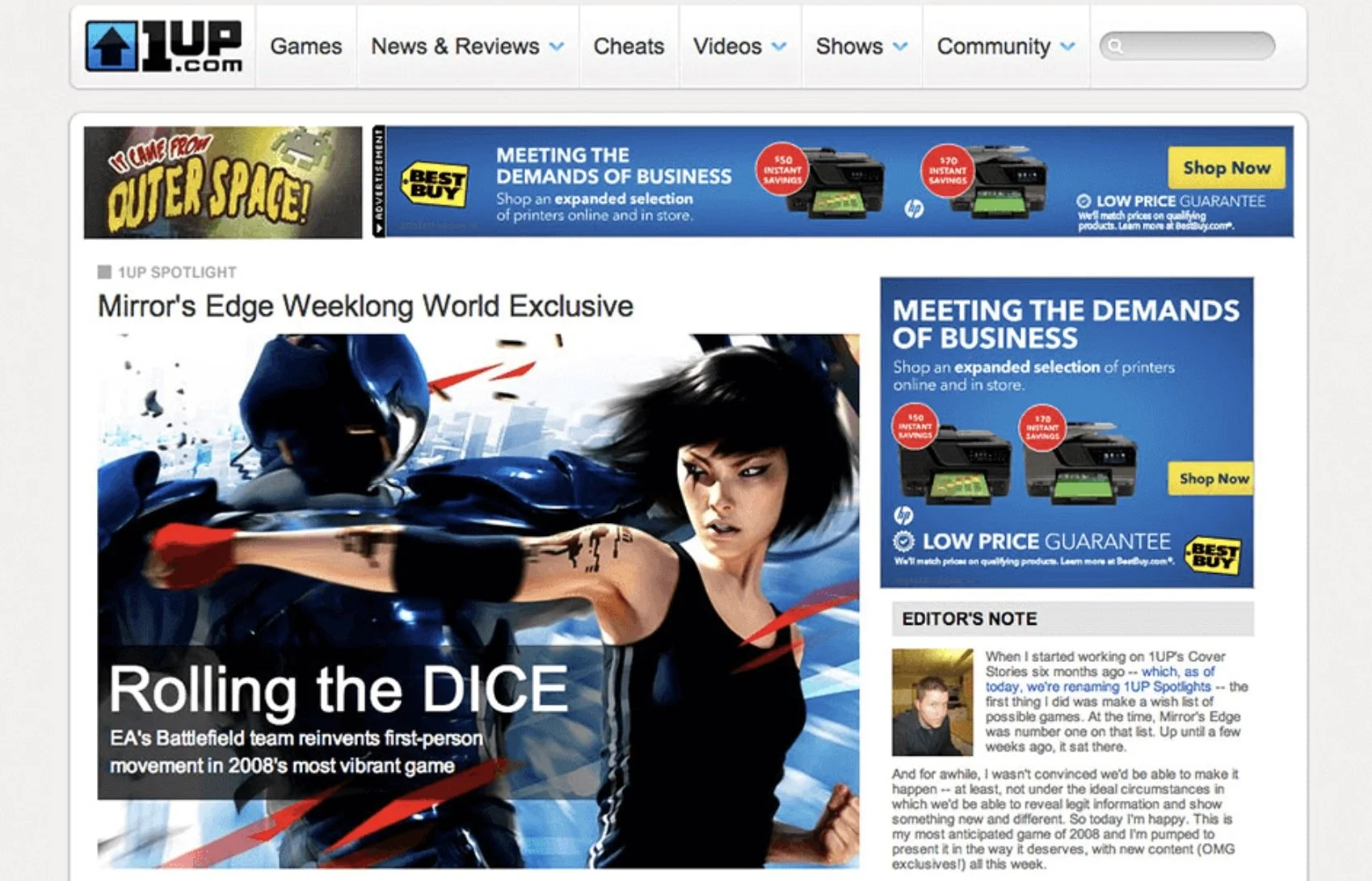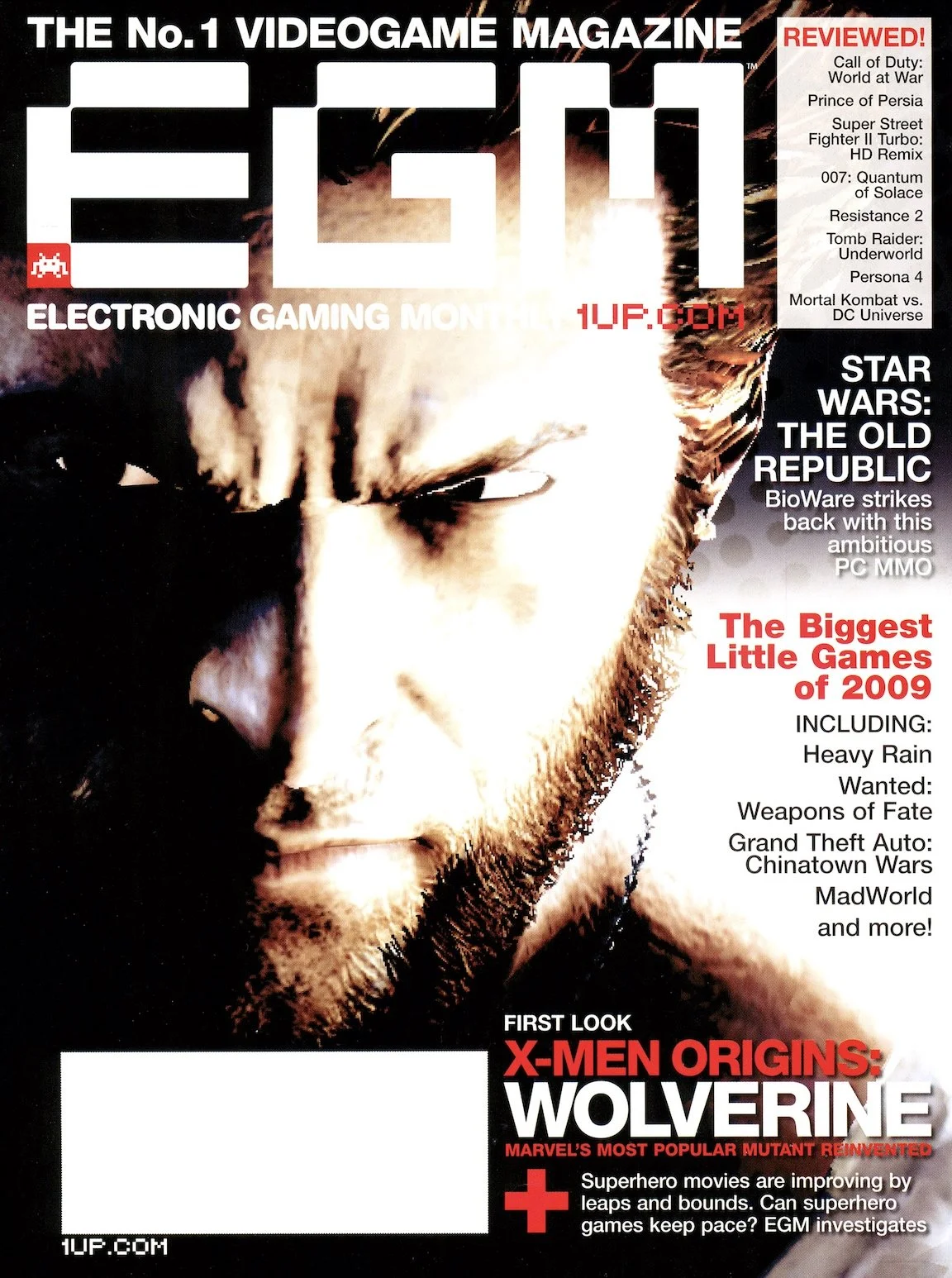From EGM magazine to 1up.com
How Electronic Gaming Monthly (EGM) evolved in the new millennium.
Magazines change over time. And the longer they run, the more they change. Different editors, creative direction, and console generations mean a single magazine can have distinct epochs. Electronic Gaming Monthly (EGM) is a case in point.
The EGM magazine I grew up reading in the early 90s is very different to the EGM that was on-sale at the turn of the millennium.
I reached out to Greg Sewart - who was at the publication from 2000 to 2003 - to talk about those differences, the evolution of the magazine, and how the launch of its online portal (1up.com) ultimately doomed the print edition.
Y2K EGM magazine
When I look at turn-of-the millennium EGM vs the magazine I read as a kid, a few things instantly stand out.
1. The console race had calmed down
Back in the early to mid 90s there was a mad scramble to bring new systems to market. The success of the Mega Drive and Super Nintendo had opened the floodgates, and everyone wanted a piece of the action. So the industry was awash with random, ill-conceived video game systems. None of these found much success, and at one point EGM was covering over 10 different systems within its pages.
By the turn of the millennium, this had been whittled down to a handful of choices, as GameCube, PS2, and Xbox prepared to slug it out while the Dreamcast said its goodbyes. This was a liminal era for the industry. The birth of the modern industry was on the horizon, but it had yet to take shape.
2. The content and design had evolved
I don’t think the aesthetic differences between early EGM and Y2K EGM get enough attention. The limitations of desktop publishing meant that magazines back in the early 90s tended to have fairly simple, modular design elements. By the end of the decade the layouts had become busier, more intricate and abstract. My theory is that the increased density of the information was a response to the arrival of the internet and the flood of info that came with it. Also, graphic designers had better tools and faster computers. So they would make eyebleed designs just to show they could.
3. The internet was starting to gain traction
What had begun with a patchwork of small fan sites, message boards and forums was consolidating into proper video game websites by the turn of the millennium. IGN and Gamespot had launched in 1996 with serious financial backing, and their efforts to create centralised online hubs was starting to challenge the dominance of magazines. These professional sites were running in parallel with a new generation of fan sites that were popping up online… and that’s where we pick up our story and meet Greg Sewart.
Welcome to the team
Greg joined Ziff Davis Publishing (the owner of EGM and several other gaming titles) in 1999. Initially, he was writing guides for Expert Gamer, but he made the jump to EGM in 2000, where he became the previews editor - a role he held until 2003.
Greg had already been kicking around the video game industry for several years by the time he joined the EGM team. He got his start writing for various fan sites in the 90s and would eventually branch out with a couple of buddies to launch Gaming-Age. Yes, the same Gaming-Age that still exists today.
Still, the move to an established media organisation proved to be an eye-opening experience. As Greg explains, “It was amazing. It was the best and the worst possible first office job you could ever have, because nothing was ever gonna live up to it afterward… We were all in our early to mid-20s, it was like a frat house a whole lot of the time.”
But not ALL the time. “We had our priorities straight,” continues Greg. “Like, when the work needed to be done, it got done. There were long hours. When you got into the last two weeks of a cycle, it wasn't strange to be going home at midnight or later. Because when the pages need to go out, they need to go out.”
Online in Y2K
The monthly magazine schedule may have been brutal, but at least it had an established cadence and rhythm. It also had a healthy revenue stream. In contrast, the online landscape was the wild west, with companies literally making it up as they went along.
As Greg notes, “Both IGN and Gamespot had been around for quite a while by that point, and there were some other big ones. But they were really struggling to generate any kind of revenue, because no one had figured out internet advertising at the time. So they were earning pennies.”
“[That meant] magazines were still more important because they were an established way to get the message out there, get your ads out there. We had very solid subscriber numbers back then. So it was a tried and true business model that everybody trusted.”
1up.com
With all that money tumbling in from print advertising, Ziff Davis Publishing weren’t in any hurry to launch a website. A 2002 Newswire article states that circulation numbers for EGM were up 25% that year to hit a record high of 536,610 a month. Which is a lot of magazines. And considerably higher than the 150,000 or so it sold per month back in the 16bit era.
Still, management couldn’t ignore the internet forever. So, behind closed doors, clandestine plans were being made to create an EGM adjacent website. It would launch in 2003 and be known as 1up.com.
Greg got to see a lot of this action up close and personal. As he recalls, “There were tons of investors who wanted to invest in the Internet. And just the amount of time and effort that was going into launching 1up.com was enough of an indicator that, okay, now the internet is super important. Way more than it had been in the five years prior that I'd been part of the publishing industry.”
Greg left EGM around the time of the 1up.com launch to pursue a career in game development. What he didn’t know, and what no one could have predicted at the time, was that 1up.com had inadvertently sown the seeds of the EGM’s eventual demise.
Those numbers are crazy
Broadband internet would arrive en masse to US consumers by the mid 2000s. According to the Pew Research Centre, residential broadband subscriber numbers jumped from 5 million to 80 million between 2000 and 2008.
This coincided neatly with the arrival of Web 2.0, social media, and smartphones. All of which made websites a far more efficient and instant way to access information than traditional print publications.
1up.com was one beneficiary of that change, and the site experienced exponential growth as it ballooned into a network of podcasts, video shows, and associated digital ‘verticals’.
But here’s where things get interesting. While other print publications began to shut down in the 2000s as online content gained momentum, EGM’s circulation numbers remained rock steady. Suspiciously so.
According to data reported on RetroMags, EGM’s print circulation actually increased as the decade progressed. Which is the sort of outlier you might find referenced in a Malcolm Gladwell book.
So what happened? Was EGM’s print publication that much better than everyone else? Maybe? But a more likely scenario is that EGM’s publishers were heavily manipulating their circulation data.
Anecdotal stories suggest that many of EGM’s subscriptions were either given away or sold at a steep discount. That’s pretty standard practice in the media industry, and it works like this.
Advertising rates in magazines are based on the number of readers,
Subscriptions are a great way to get those reader numbers up,
A magazine can lose money on subscriptions that are practically given away…
Because the higher ad rates make up the difference and then some.
In other words, magazines can juice the official numbers to get their circulation figures up and use those inflated figures to sell more ads at a higher rate. It’s an elaborate house of cards. But it’s one that can quickly come unstuck if you get external accountants coming in and looking at the books… or your parent company goes bankrupt.
Going going gone
From the outside looking in, Ziff Davis’ video game assets would have been a tempting acquisition. Here was a network of popular websites and podcasts supplemented by a print magazine that was bucking trends and outselling all its rivals. Cool, cool, cool.
The thing is, Ziff Davis was a massive operation, and video games only made up a small part of its portfolio. So when the company ran into trouble and filed for bankruptcy protection in 2008 the competitors swooped in to pick the bones.
UGO Entertainment would formally acquire the 1up network of sites from Ziff Davis in early 2009. But the most telling part of that deal is what WASN’T included. EGM magazine remained with Ziff Davis, and the moment the deal went through they unceremoniously shut it down.
Which doesn’t make a whole lot of business sense if your magazine is legitimately selling 500,000+ issues a month and destroying the competition.
Here’s how the official press release framed it. “With demand for print continuing to decline amongst both advertisers and readers and the content being produced by 1UP no longer available for use in the publication, it simply did not make sense for us to move forward with this business any longer.”
To borrow a phrase from Cannibal Ox - “It’s a cold world.”
Epitath
Ziff Davis published their final issue of EGM in January 2009. Original owner and publisher Steve Harris bought back the rights to magazine and relaunched it in 2010. It would run until 2014.
UGO sold 1up.com to IGN in 2011… And here’s the kicker. Ziff Davis then purchased IGN in 2013. And you wanna guess what they did with 1up.com at that point? That’s right, they shut it down. The site ceased to exist in early 2013.
Greg Sewart would pivot to game development after his tenor at EGM, working across a variety of platforms. These days you can find him online producing the Player-one podcast and Generation 16 video series.
***
Read the original EGM article here.
Read our interview with Dan ‘Shoe’ Hsu here.
